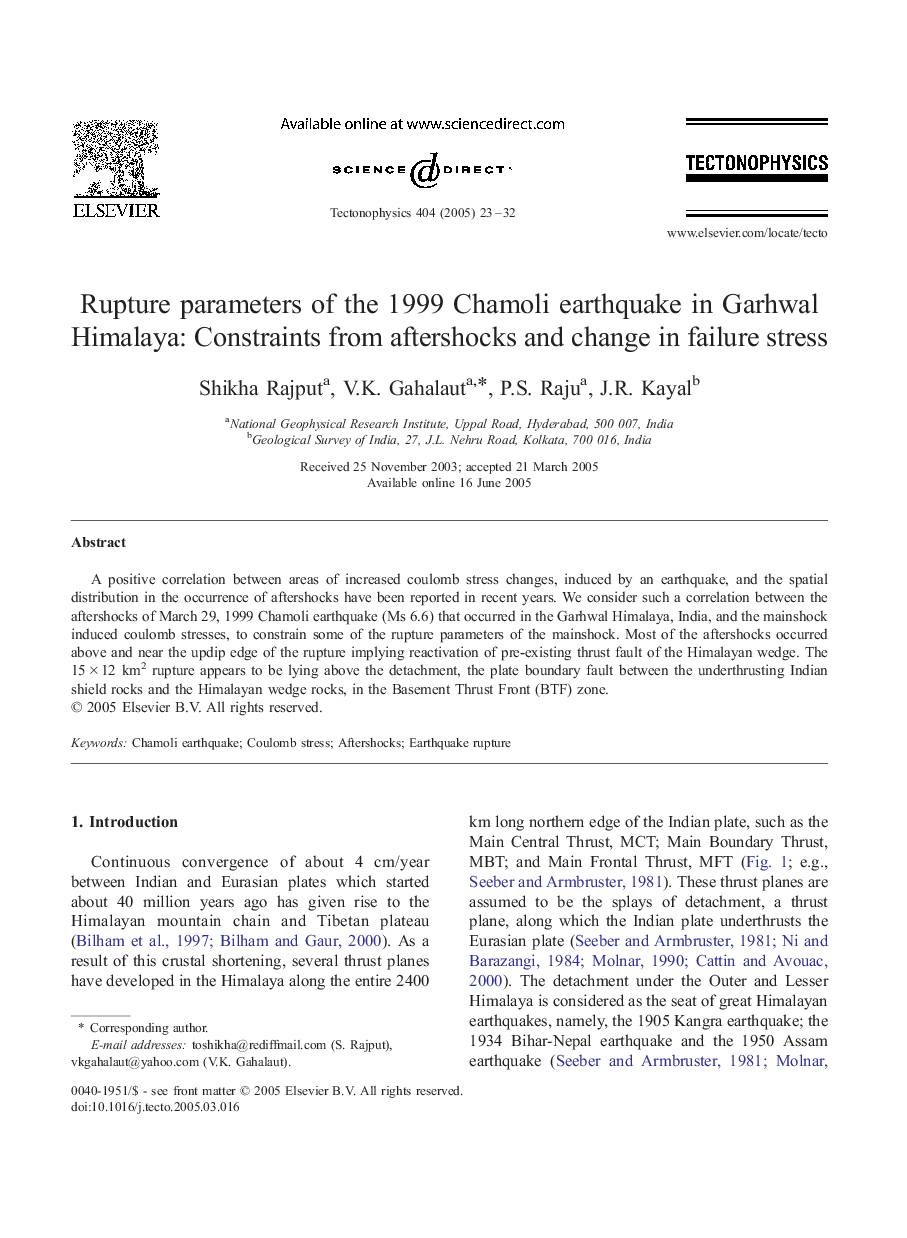| Article ID | Journal | Published Year | Pages | File Type |
|---|---|---|---|---|
| 9527166 | Tectonophysics | 2005 | 10 Pages |
Abstract
A positive correlation between areas of increased coulomb stress changes, induced by an earthquake, and the spatial distribution in the occurrence of aftershocks have been reported in recent years. We consider such a correlation between the aftershocks of March 29, 1999 Chamoli earthquake (Ms 6.6) that occurred in the Garhwal Himalaya, India, and the mainshock induced coulomb stresses, to constrain some of the rupture parameters of the mainshock. Most of the aftershocks occurred above and near the updip edge of the rupture implying reactivation of pre-existing thrust fault of the Himalayan wedge. The 15Â ÃÂ 12 km2 rupture appears to be lying above the detachment, the plate boundary fault between the underthrusting Indian shield rocks and the Himalayan wedge rocks, in the Basement Thrust Front (BTF) zone.
Related Topics
Physical Sciences and Engineering
Earth and Planetary Sciences
Earth-Surface Processes
Authors
Shikha Rajput, V.K. Gahalaut, P.S. Raju, J.R. Kayal,
